F-4J Phantom II
Rockin' Rhino
Limited Edition

Eduard, 1/48 scale
S
u m m a r y : |
Description and Item No.: |
Eduard Kit No. 1143 - Rockin' RhinoLimited Edition |
Contents and Media: |
500 parts in grey plastic (including many not used); 16 parts in clear plastic; 20 parts in grey resin; one coloured and one brass photo-etched fret; self-adhesive die-cut masking sheet; one decal sheet covering five subjects |
Price: |
USD$99.95 plus postage from Eduard
USD$67.46 plus postage from Squadron
£55.70 (£46.42 Export) plus postage from Hannants |
Scale: |
1/48 |
Review Type: |
First Look |
Advantages: |
Very fine crisp surface textures including recessed panel lines; high level of detail; high quality photo-etched and resin upgrades. |
Disadvantages: |
None noted. |
Recommendation: |
Academy’s F-4 family are already the best Phantoms in 1/48 scale and Eduard’s resin and photo-etched parts kick the kit up a level of detail to ensure that you will have the Rockin’est Rhino in town! Highly Recommended. |
Reviewed by Brett Green

Eduard's 1/48 scale Rockin' Rhino Limited Edition is available online from Squadron.com
The McDonnell Douglas F-4 Phantom II is a tandem two-seat, twin-engine, all-weather, long-range supersonic jet interceptor aircraft/fighter-bomber originally developed for the United States Navy by McDonnell Aircraft. It first entered service in 1960 with the U.S. Navy. Proving highly adaptable, it was also adopted by the U.S. Marine Corps and the U.S. Air Force, and by the mid-1960s had become a major part of their respective air wings.
The Phantom is a large fighter with a top speed of over Mach 2.2. It can carry more than 18,000 pounds (8,400 kg) of weapons on nine external hard points, including air-to-air missiles, air-to-ground missiles, and various bombs. The F-4, like other interceptors of its time, was designed without an internal cannon. Later models incorporated an M61 Vulcan rotary cannon. Beginning in 1959, it set 15 world records for in-flight performance, including an absolute speed record, and an absolute altitude record.

During the Vietnam War, the F-4 was used extensively; it served as the principal air superiority fighter for both the Navy and Air Force, and became important in the ground-attack and aerial reconnaissance roles late in the war. The Phantom has the distinction of being the last U.S. fighter flown to attain ace status in the 20th century. During the Vietnam War, the U.S. Air Force had one pilot and two weapon systems officers (WSOs), and the US Navy had one pilot and one radar intercept officer (RIO) become aces by achieving five aerial kills against enemy fighter aircraft. The F-4 continued to form a major part of U.S. military air power throughout the 1970s and 1980s, being gradually replaced by more modern aircraft such as the F-15 Eagle and F-16 in the U.S. Air Force, the Grumman F-14 Tomcat in the U.S. Navy, and the F/A-18 Hornet in the U.S. Navy and U.S. Marine Corps.
The F-4 Phantom II remained in use by the U.S. in the reconnaissance and Wild Weasel (Suppression of Enemy Air Defenses) roles in the 1991 Gulf War, finally leaving service in 1996. It was also the only aircraft used by both U.S. flight demonstration teams: the USAF Thunderbirds (F-4E) and the US Navy Blue Angels (F-4J). The F-4 was also operated by the armed forces of 11 other nations. Israeli Phantoms saw extensive combat in several Arab–Israeli conflicts, while Iran used its large fleet of Phantoms in the Iran–Iraq War. Phantoms remain in front line service with seven countries, and in use as a target drone in the U.S. Air Force. Phantom production ran from 1958 to 1981, with a total of 5,195 built, making it the most numerous American supersonic military aircraft.*
The F-4 Phantom II in 1/48 scale
There has been no shortage of 1/48 scale F-4 Phantom kits over the years, with offerings from AMT, Esci, Fujimi, Italeri, Monogram, Revell and more. Of these, the pick for many years were the Hasegawa kits.
Originally released in 1979, Hasegawa’s F-4J Phantom featured accurate outlines, a high level of detail and crisp raised panel lines (revised to recessed panel lines for later F-4J releases). This model spawned a huge family of 1/48 scale USAF and Navy Phantoms, including the British Spey-powered versions. Apart from the raised panel lines on early releases, the main complaint about these kits was stingy weapons allocation – typical of Hasegawa at the time.
In 2012, Academy released the first member of their 1/48 scale Phantom II family with an F-4B moulded in grey and white “no paint required” plastic. Despite the initial gimmicky impression evoked by the multi-coloured sprues, the kit itself was very impressive. Panel lines were crisp and fine, detail was good, engineering included a one-piece upper fuselage shell (similar to the parts breakdown of the Tamiya 1/32 scale kits), and the box contained a generous allowance of weapons, racks and tanks.
In my opinion, the Academy kit features slightly better surface texture and details, but it trumps the Hasegawa kit soundly in the ordnance and engineering departments.
In recent years, Eduard has been supplementing their own original kits with limited edition packaging of other companies’ products plus BRASSIN resin, Eduard photo-etch, masks and colourful new decals.
One of Eduard’s most recent reboots is their “Rockin’ Rhino” package, based on Academy’s excellent 1/48 scale F-4J Phantom II.
Eduard’s striking box art merges the imagery of flower power, peace and love with the Stars and Stripes and a rampant Rhino almost bursting through the box top.
The plastic parts are light greenish grey, and there are a lot of them - around 500 in total – although many will be relegated to the spares box.
The 24 BRASSIN resin parts include parts for the cockpit, jet exhausts and wheels.
Two lovely seats with cushions cast in place will be supplemented with colour photo-etched parts.
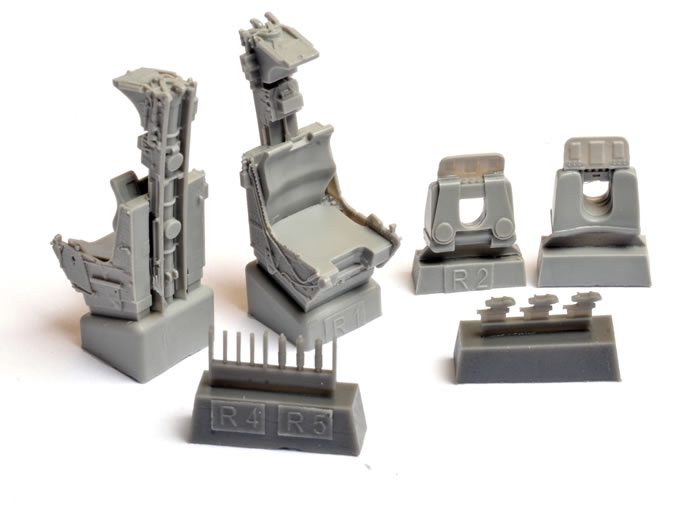
The burner cans, tail pipes, rear turbine and nozzles are perfectly cast, simple to fit and beautifully detailed.
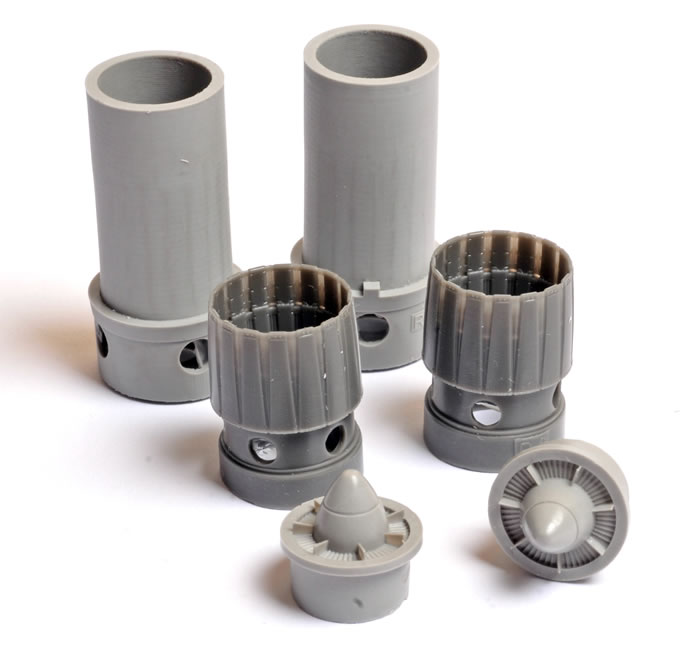
The main and nose wheels are also crisply detailed and represent a worthwhile improvement over the plastic kit parts.

Most of the coloured photo-etched parts are destined for the cockpit, including side consoles, instrument panels, harness straps and pull handles.
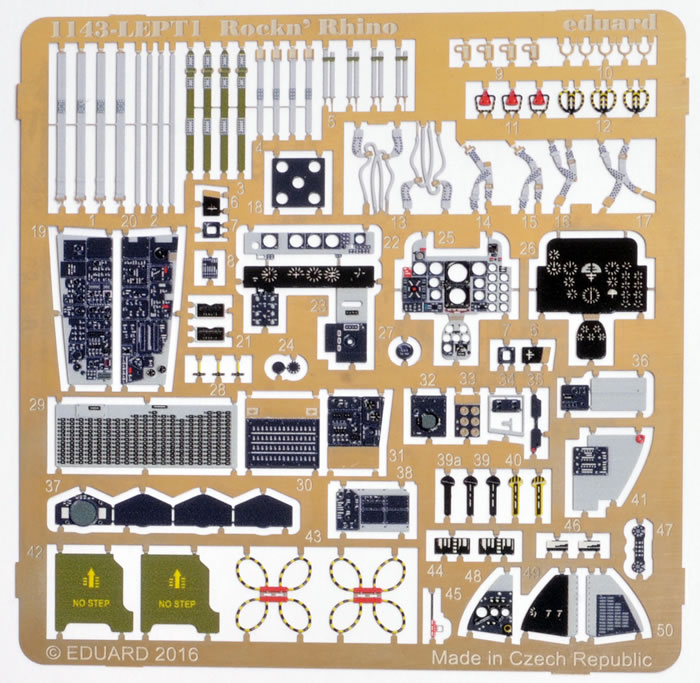
The brass fret adds yet more detail to the cockpit and the tail pipe area, including flame holders.

The model includes four full sprues crowded with bombs, rockets, rails, mounts, tanks and more.
The canopy is provided in four parts and they may be posed open or closed. The quality of the clear parts is excellent.
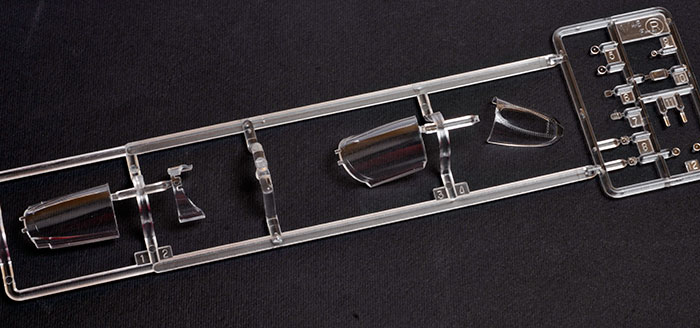
Self-adhesive die-cut masks are provided for the canopies and the wheels.
Markings
Markings are provided for five colourful and varied machines.
Two large decal sheets are included.
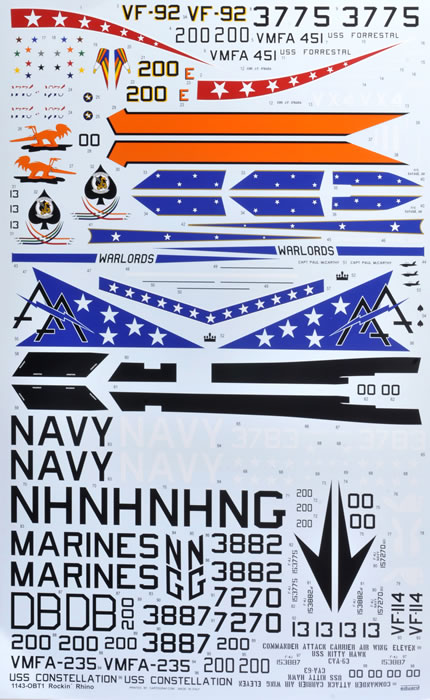
The first covers the unique markings for each of the five options, while the second provides national markings and scores of stencils.

The decals have been researched and designed by Furball Aero Design and perfectly printed by Cartograf.
Academy’s F-4 family are the best Phantoms in 1/48 scale. Eduard’s resin and photo-etched parts kick the kit up a level of detail to ensure that you will have the Rockin’est Rhino in town!
Highly Recommended.
* Historical summary courtesy of Wikipedia
Thanks to Eduard for the sample.
Review Text and Images Copyright © 2016 by Brett Green
Page Created 23 March, 2016
Last updated
24 March, 2016
Back to HyperScale Main Page
Back to Reviews Page

|
Home
| What's New |
Features |
Gallery |
Reviews |
Reference |
Forum |
Search